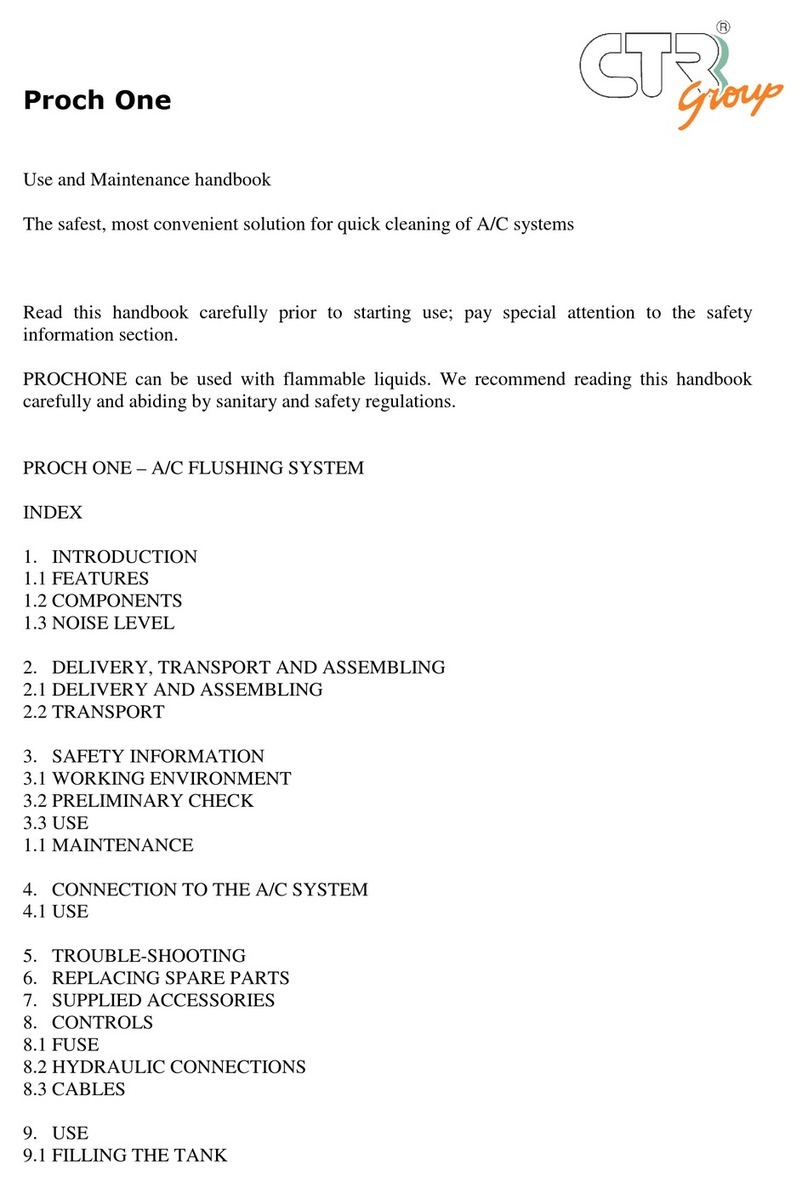
PRATIKA
User and Maintenance Guide Page 2/33
CTR Group thanks you for having chosen this product from its range and recommends that you
read this guide carefully. It contains all the information you will need for correctly using this model.
We therefore recommend that you follow all the safety instructions and read all sections of this
guide before using the machine. We would also advise that you keep the guide in a safe place for
future reference. The contents of this guide are subject to change without warning, nor is the
company under any obligation to incorporate changes and improvements to the parts already
printed. Reproduction or unauthorised translation of any part of this guide is severely prohibited
without written permission from the Company. During the full warranty period, CTR is responsible
for all manufacturing defects, which it undertakes to eliminate in the shortest possible time.
WARRANTY
The warranty period, under current legislation, is for 12 months from the date of purchase. The
warranty only covers the right to replacement of any faulty part of the machine. The warranty is not
valid in the event that the machine is used for a purpose other than that for which it was intended,
or is tampered with by persons not authorised by our company or, in any case, using non-
compliant methods or parts.
The Company C.T.R. s.r.l Via G.Di Vittorio, 78 43044 Lemignano di Collecchio (PR - Italy), in the
name of its Legal Representative, declares, under its sole responsibility, that the machine System
for managing conditioning and refrigerating plants, Model PRATIKA, complies with the provisions
of directive 89/392 and directive 89/336 and subsequent modifications and integrations.
The Company further declares that:
-the year of manufacture is printed on the label (with CE marking) to be found on the machine.
-the technical manufacturing documentation attesting manufacture in compliance with the
Directive is available at our Company
-the machine Serial Number (if present, in that it is not mandatory) can be found on the machine.
Lemignano di Collecchio (PR)
.................................................
Stamp and signature of authorised representative
Inspection is certified by the plate
with the CE marking, as illustrated,
positioned on the machine.
DECLARATION OF COMPLIANCE
DIRECTIVE 89/392 AND 89/336 AND SUBSEQUENT MODIFICATIONS AND
INTEGRATIONS
Insert photo
with plate




























